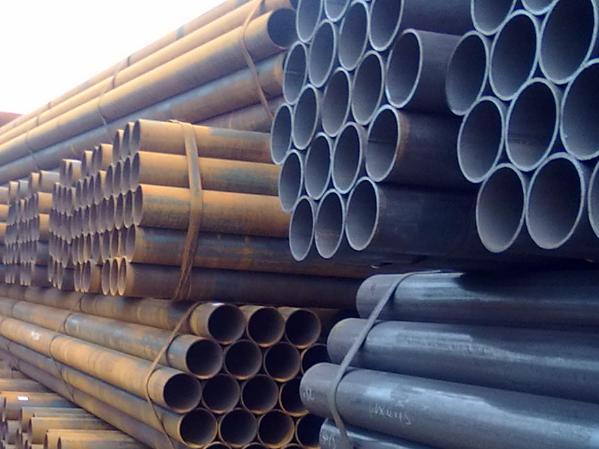What is a Longitudinal Seam Welded Pipe?
Longitudinal seam welded pipes (LSAW) are generally used to transport low-pressure fluids. Usually made of Q195, Q215A, Q235A steel, Q235B plain carbon. It is mainly used for bridges, roads, and construction pipes, and is used in water supply projects, petrochemical industries, agricultural irrigation, and urban construction.
What is the process flow of longitudinal seam welded pipe?
The main technological process of welded pipe is: raw material uncoiling, flattening, end cutting and welding, looper, forming, welding, internal and external welding bead removal, calibration, induction heat treatment, sizing and straightening, eddy current testing, cutting, hydraulic inspection , pickling, quality inspection, packaging, and delivery.

What problems are usually encountered in the production of longitudinal seam welded pipes?
1. The edge of the longitudinal seam welded pipe appears
This usually occurs on slitting coils. Mainly there will be jagged unevenness at the edge of the steel strip. The reason is that the disc blade of the slitting machine is blunted after a long time of work. This situation will affect the stability of the weld and cracks will appear.
2. Longitudinal seam welded pipe appears wave bend
This mainly presents the appearance that one side or both sides of the edge of the steel strip become bent longitudinally. The reasons for this are firstly the wear of the rolls, the second is the uneven thickness of the strip, and the third is the uneven temperature of the center and edge of the strip. This situation will lead to severe lap welding and failure to produce.
3. There are indentations, scars, scratches, and uneven ends of the longitudinal seam welded pipe
This is mainly due to the occurrence of hot-rolled or cold-rolled steel strips, which will reduce the yield and pass rate of
longitudinal seam welded pipes. The indentation is mainly caused by foreign matter on the roll during rolling; scarring is an inherent defect of the strip; scratches are formed by scratches by foreign matter; unevenness of the head and tail means that the steel strip or coil has not been cut after rolling operation.
4. The sickle bend of the
longitudinal seam welded pipe
This mainly presents the phenomenon of bending to one side on the horizontal plane along the length direction of the steel strip. The main reason is that the two ends of the roll are not uniformly pressed, and the other is that the thickness or temperature of both sides of the strip is not uniform.
Irregular production operations will cause various problems. Therefore, it is necessary to strictly follow the production steps to ensure the quality of longitudinal seam steel pipes.
Tips: Carbon steel welded pipes can be divided into three types: straight seam submerged arc welded steel pipes, spiral welded pipes, and high-frequency straight seam welded steel pipes (Electric Resistance Welded Steel Pipe) according to the forming method of the weld seam.


